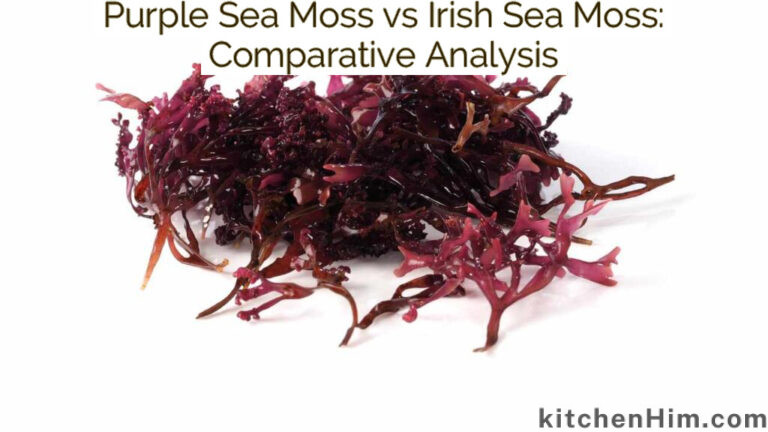Grinders are widely used in both domestic and commercial settings for a variety of purposes. This article will discuss the differences between wet and dry grinders, outlining the advantages and disadvantages of each type. The two primary types of grinders are wet grinders and dry grinders, each with their own unique characteristics and uses. A comparison of the two will be presented to allow the reader to make an informed decision when choosing the right kind of grinder for their needs.
Key Takeaways
Grinders are a useful tool for many tasks, and there are a following key differences between wet and dry grinders.
- Wet grinders are typically used for wet materials such as nuts and seeds, whereas dry grinders are used for grinding dry ingredients like coffee beans, nuts, spices, and grains.
- Wet grinders are generally more efficient and produce a finer texture, whereas dry grinders are more cost-effective and require less cleaning.
- Wet grinders require more frequent cleaning and maintenance due to the presence of moisture in the materials, while dry grinders require less frequent cleaning and maintenance.
- Wet grinders have more powerful motors than dry grinders, which can make them more efficient for certain types of grinding.
- Wet grinders are usually more expensive than dry grinders due to their higher efficiency and power.
- Wet grinders usually require more space than dry grinders, as they require a larger container to hold the wet materials.
- Wet grinders are more likely to clog or jam than dry grinders, due to the presence of moisture in the materials.
Types of Grinder
Grinders can be divided into two main categories: wet grinders and dry grinders. Wet grinders grind food with the addition of water or other liquids, while dry grinders grind without the addition of water. Wet grinders are typically used to prepare food such as dosa, idli, and vada, while dry grinders are used to grind spices, grains, and pulses.
Wet grinders have a cylindrical grinding stone attached to the motor shaft and are powered by either electric motors or manual labor. This grinding stone is made from granite and is designed to grind food items such as dosa and idli. The grinding stone is usually made from corundum and is often coated with a non-stick surface to prevent food from sticking.
Dry grinders are usually manual and require considerable force to operate. They are composed of two metal plates, one of which rotates against the other. Dry grinders are used to grind spices, nuts, and grains into a powder form. The grinding plates can be made from different materials, such as stainless steel or cast iron, and they can be adjustable to allow for finer or coarser grinding.
Both wet and dry grinders have their advantages and disadvantages. Wet grinders are more efficient and efficient in grinding food, while dry grinders tend to be more durable and can handle a wider variety of food items. However, wet grinders require more maintenance and can be more difficult to clean. Dry grinders can have a longer life span and are easier to clean. In addition, dry grinders are usually more affordable.
Advantages of Wet Grinder
Advantages of using a wet grinder include increased efficiency, better heat dissipation, and reduced risk of fire. The grinder uses a slow turning stone to reduce the risk of heating up the ingredients as they are being ground. This allows for more precise and consistent results. Additionally, the wet grinder can be used to reduce the amount of noise generated during the grinding process. Furthermore, using a wet grinder eliminates the risk of fire that is associated with dry grinders.
Some of the other advantages of using a wet grinder include:
- Increased efficiency due to the slow turning stone
- Better heat dissipation
- Reduced risk of fire
- Less noise during the grinding process
Disadvantages of Wet Grinder
Using a wet grinder can come with certain drawbacks. One of the main disadvantages is that the grinder can take a longer time to grind food than a dry grinder. This is due to the added moisture content, which slows down the grinding process. Additionally, wet grinders require more frequent cleaning and maintenance than dry grinders in order to prevent the buildup of bacteria and other contaminants. Wet grinders are also more expensive than dry grinders. This is because they require additional parts and accessories, such as the grinding stone, to make them work correctly. Moreover, wet grinders can be difficult to store due to their size and weight. They take up a lot of space and require a sturdy surface to be placed on.
In addition to the aforementioned drawbacks, wet grinders also produce a lot of noise when in use. This can be very disruptive, especially in a quiet home. Furthermore, wet grinders need a lot of electricity to operate, which can significantly increase electricity bills. Furthermore, wet grinders can be dangerous to use because the electrical components can become exposed to water. This can cause short circuits and fires, which can be very dangerous. Finally, wet grinders require a lot of skill and knowledge to use properly. Therefore, they may not be the best choice for inexperienced users.
Advantages of Dry Grinder
Dry grinders offer numerous advantages over wet grinders. These include:
- More control over the grinding process – Dry grinders are typically adjustable, allowing users to control the size and texture of the ground material. This is useful for a variety of tasks, such as creating finely ground flour or coarsely ground spices.
- Easier cleaning – Dry grinders typically generate less mess than wet grinders due to the lack of liquid involved in the process. This makes them easier to clean and maintain.
- Reduced risk of contamination – Since there is no liquid involved in the grinding process, there is less risk of contamination from bacteria or mold.
- Reduced risk of fire – Wet grinders often use electricity, which can increase the risk of fire. Dry grinders, on the other hand, use manual power, eliminating this risk.
Disadvantages of Dry Grinder
While dry grinders offer several advantages, they also have some disadvantages. Chief among them is the risk of dust and other particles causing contamination. As dry grinders use high speed to grind food items, they can create a lot of airborne particles which can cause contamination. This is particularly concerning in food preparation areas where cleanliness and hygiene are essential.
Another disadvantage of dry grinders is that they can be noisy. Since they use high speeds to rotate blades, they can generate a lot of noise. This can be a problem if the grinder is used in a home kitchen or other area where noise levels need to be kept low.
In addition, dry grinders are not suitable for grinding tough food items such as nuts and seeds. This is because they can cause the grinder blades to become dull over time, which can reduce their efficiency and reduce the quality of the grind.
Finally, dry grinders can also be more expensive than wet grinders. This is because they use more powerful motors which can drive the blades at higher speeds and require more energy. As such, they can be more expensive to purchase and maintain.
Overall, while dry grinders offer advantages such as convenience, speed, and efficiency, they also have some disadvantages such as risk of contamination, noise, difficulty with tough food items, and cost. As such, it is important to consider these factors when deciding which type of grinder is best suited for a particular application.
Frequently Asked Questions
What Materials Can Each Grinder Be Used For?
A wet grinder and a dry grinder are both tools that can be used to grind materials into a powder or paste. Wet grinders use water to soften the material being ground, while dry grinders rely on friction and compression. Wet grinders are typically used to grind softer materials such as nuts, seeds, vegetables and fruits, while dry grinders are used to process harder materials like grains, spices, and certain types of metal. Wet grinders are best used for materials that need to retain moisture, such as in batters and pastes, while dry grinders are more suited for processing harder, drier materials.
What Safety Precautions Should Be Taken When Using Each Grinder?
When using any kind of grinder, safety precautions should be taken to ensure the safety of the operator and those in the vicinity. For wet grinders, the operator should wear protective eyewear to guard against splashing of liquid and debris. The operator should also wear protective gloves, as wet grinders typically generate heat and can cause burning. When cleaning wet grinders, the operator should be sure to unplug the machine and allow the blade to cool down. For dry grinders, the operator should also wear protective eyewear and gloves, but should also wear a dust mask to protect against the inhalation of airborne particles. All grinding should be done in a well-ventilated area, and the area should be clear of any objects that may be damaged by debris.
What Type of Maintenance Is Required for Each Grinder?
The type of maintenance required for grinders depends on the type of grinder in use. Wet grinders require more frequent maintenance than dry grinders as they tend to be more susceptible to corrosion and rust accumulation. For wet grinders, regular cleaning and oiling is necessary to prevent rust and deterioration. This includes removing any food residue from its surfaces, wiping down the blades and body with a damp cloth, and applying a light oiling agent to its components. Dry grinders require less frequent maintenance, but should still be checked periodically to ensure that all its components are working properly. This includes inspecting any blades or discs for wear and tear and replacing them if needed. Additionally, removing any dust or debris from the grinder is important to ensure its efficient operation.
What Is the Cost Comparison Between Wet and Dry Grinders?
The cost of wet and dry grinders varies depending on the size and features of the model. Generally, dry grinders are more affordable than wet grinders, as they require less maintenance and have fewer components. Wet grinders, however, usually come with additional attachments such as a kneading blade and a coconut scraper, which add to the overall cost. Additionally, wet grinders require more frequent maintenance, such as regular cleaning, to keep them functioning efficiently. Purchasers should consider their budget and desired features when comparing the cost of wet and dry grinders.
Is One Type of Grinder Better Suited for Specific Tasks Than the Other?
It is often asked if one type of grinder is better suited for specific tasks than the other. In terms of cost comparison, wet grinders tend to be more expensive than dry grinders. However, this does not necessarily indicate that one type of grinder is better suited for certain tasks than the other. The choice of grinder should be based on the type of ingredients to be ground and the desired consistency of the end product. Wet grinders may be better suited for processing wet ingredients, while dry grinders may be more effective when dealing with dry ingredients. Additionally, both types of grinders can be used in combination with different levels of coarseness to achieve the desired end result.
Conclusion
Grinders are a useful tool for many tasks. Wet grinders are commonly used for wet materials such as nuts and seeds, but can also be used for dry materials such as grains, beans, and spices. Dry grinders are useful for grinding dry ingredients such as coffee beans, nuts, spices, and grains. Both types of grinders have their advantages and disadvantages. Wet grinders are usually more efficient and produce a finer texture, while dry grinders are more cost-effective and require less cleaning. The decision on which type of grinder to use depends on the material to be ground and the desired results.




